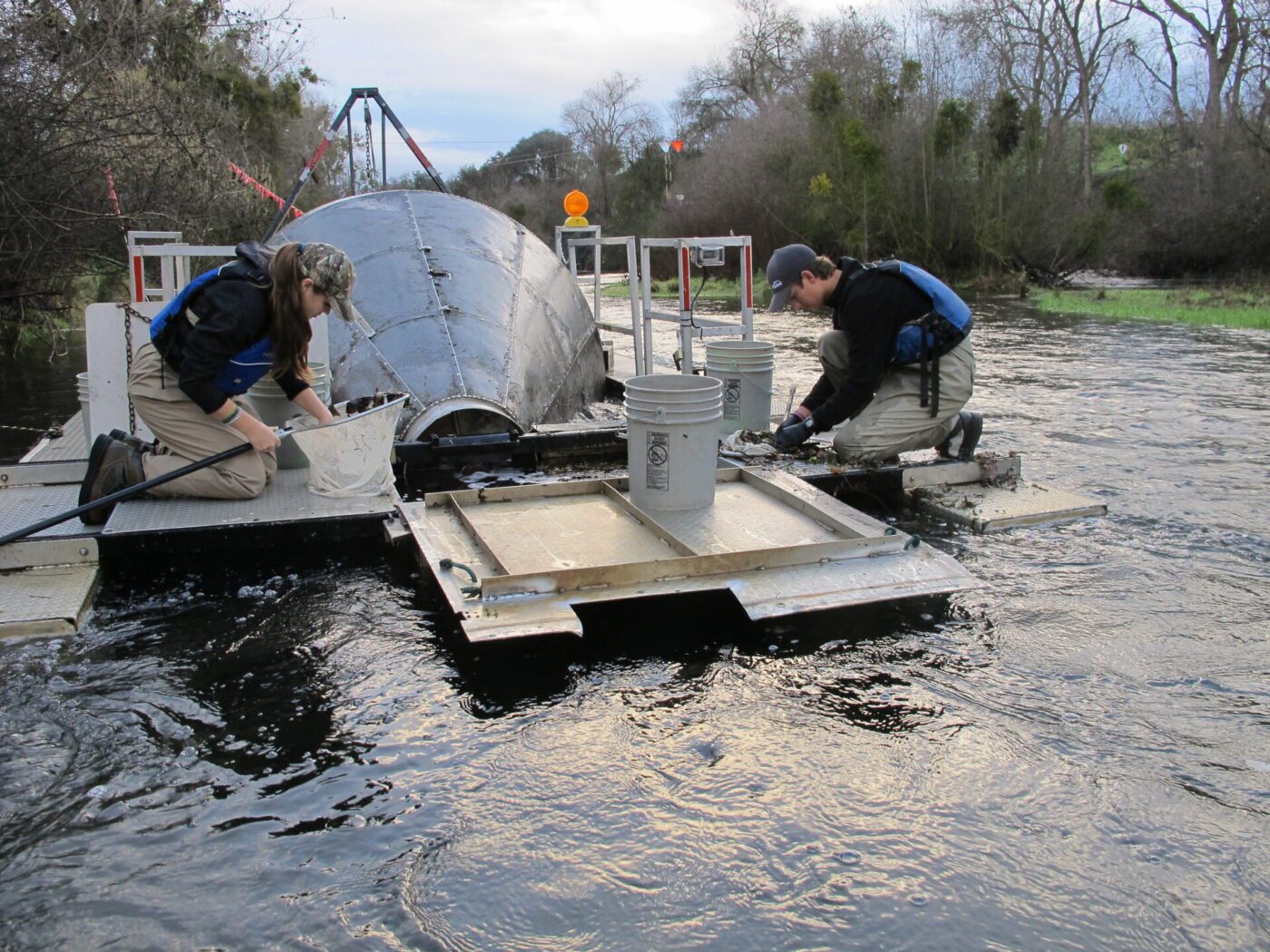Rotary screw traps have become an essential tool for salmonid life-cycle monitoring throughout the western United States. FISHBIO’s founders were instrumental in the introduction and operation of California’s first rotary screw trap on the Sacramento River in 1991. Our teams have since operated multiple rotary screw traps annually to assess downstream migration timing and abundance of juvenile salmon and steelhead throughout the Central Valley. Data from these traps can help track changes in fish abundance in response to reservoir operations, river flow, and other environmental conditions.

A rotary screw trap consists of a large cone suspended between two floating pontoons. River flow rotates the cone and funnels a portion of the migrating fish into an underwater holding tank at the back of the trap. FISHBIO personnel monitor the traps daily during the migration season to ensure they are operating smoothly, and also count, measure, and release the collected fish. Throughout the season, we use photonic dye to regularly mark known numbers of juvenile fish that we release upstream of the traps, and calculate each trap’s efficiency based on the number of marked fish that are recaptured. Our rotary screw traps are manufactured by EG Solutions in Oregon.
Publication:
Pilger, T., M. Peterson, D. Lee, A. Fuller, and D. Demko. 2019. Evaluation of long-term mark-recapture data for estimating abundance of juvenile fall-run Chinook salmon on the Stanislaus River from 1996 to 2017. San Francisco Estuary and Watershed Science 17. DOI: 10.15447/sfews.2019v17iss1art4
